
by Joshua Criss | Jul 14, 2022
The Case for Bats
Biological control is a pillar of integrated pest management. It may seem a bit daunting the principle is simple. All things in nature have predators including insects. Biological control is simply building a conducive environment for the predators of undesired pests. One animal not often thought of in this capacity is bats. Insectivores by nature, these underutilized creatures have a big impact to your open spaces. Their steady diet of moths (Lepidoptera), beetles (Coleoptera) and flies (Diptera, which includes mosquitoes) reduce insect pressure to your gardens and landscaping.
I know what you are thinking. How effective can they possibly be? Pregnant females consume up to two thirds of their body weight through the summer months while rearing pups. Bats are small but keep in mind that these are not solitary animals. In south Texas, a single large colony consumes enough insects to save cotton farmers an estimated $741,000 per year in insecticides. That is just to illustrate the point as you won’t be able to attract huge colony. There is no reason to believe a smaller colony will not provide similar services in your gardens.
Habitat
Now that your interest is piqued, how can you attract bats to your property? Installing a bat house is the easiest way. They are typically a two foot by one foot structure holding single or multiple chambers in which bats roost. It provides shelter from predation and weather while providing a place to rear pups. Though commercially available they may be built at home with minimal cost. Place the bat house in a location with morning sun at least 12 feet off the ground. Ensure there is enough airflow around the house to keep them cool, but that the structure is watertight. Mount houses on poles next to buildings and you’ll have better success attracting residents. With everything in place, it is time to discover who will most likely be your new neighbor.
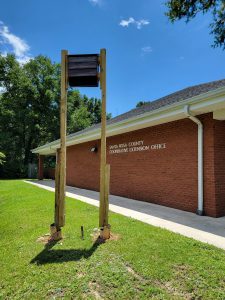
photo: Joshua Criss
The Bats of North Florida
Florida is home to 13 species of bats statewide. Of these, 11 may be found in the Panhandle but only 3 are common enough to be routinely seen. The Brazilian free-tailed bat (Tadarida brasiliensis) is the most common. Medium sized with brown fur, they have a long tail, wrinkled cheeks, and roost in man-made structures.

Photo: IFAS
Second most common are Evening bats (Nycticeius humeralis). These dark brown to yellow bats have short ears with a broad hairless muzzle. They are tolerant of other bat species often roosting in tandem with them.
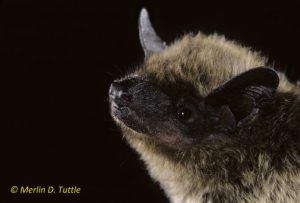
Photo: IFAS
Finally, the panhandle is home to Southeastern Myotis (Myotis austroriparius). Easily the smallest of these bats, they are dull gray to brown with a lighter belly and long hairs between their toes. This species is the bat most likely to eat mosquitoes.
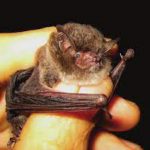
Photo: Jeff Gore, FWC
Finally, the panhandle is home to Southeastern Myotis (Myotis austroriparius). Easily the smallest of these bats, they are dull gray to brown with a lighter belly and long hairs between their toes. This species is the bat most likely to eat mosquitoes.
A Word of Caution
No article on wildlife would be complete without a word of caution. Bats are wild animals and should be treated as such. Never touch a bat on the ground as it most likely is not healthy. Bats do not generally cause issues but have been known to be disease vectors. Call a professional to collect the animal and never bring it into your home.
Bats can be a wonderful tool in controlling pests on your property. Creating habitat can help reduce pesticide need and cost to the homeowner. For more information on bats, see this Ask IFAS document, or contact your local extension agent for additional information on this and any topic regarding your gardens and more.
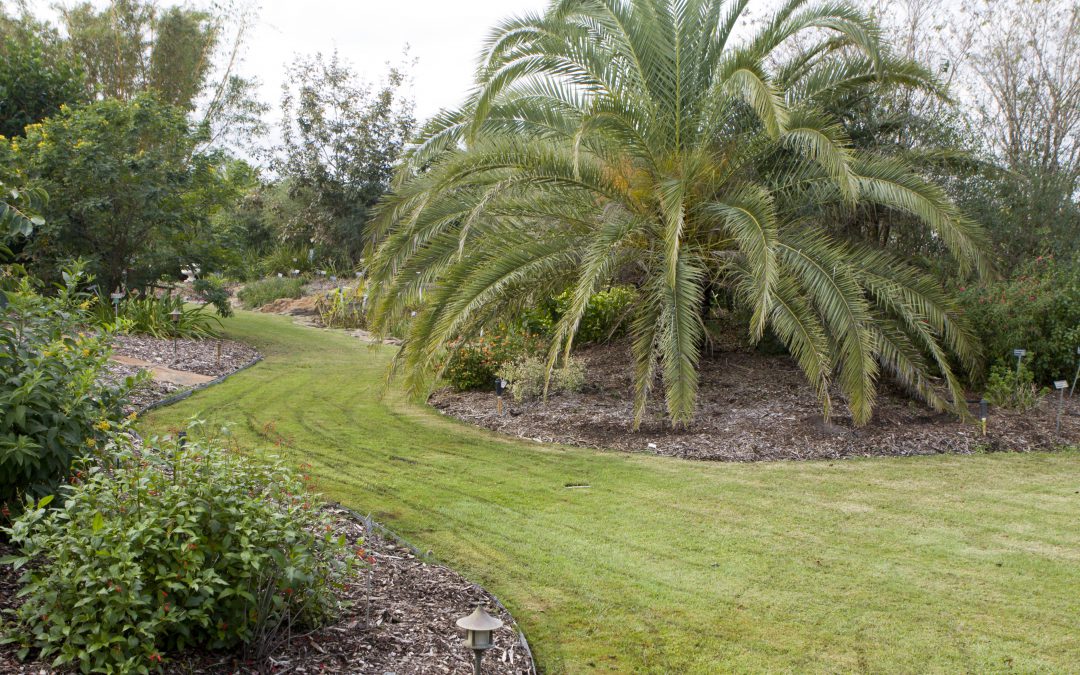
by Joshua Criss | Apr 20, 2022
Getting your landscape set up in the spring is an in-depth process. Trees are pruned, soil amended, and the plantings have been accomplished. Now you have exactly the look you want. It would be easy to sit back, open a beverage of your choice, and watch it all come together. Don’t get comfortable just yet, there is a group of pests eyeing your plants. Insects come in many forms, looking to make a meal from your hard work. Do not fear though, there is a straightforward way to protect yourself from these creatures. Integrated pest management is a system of four control approaches designed to mitigate pest damage while minimizing impact on the environment.
Identification is Key
Before any of these steps may begin pests must be identified. This starts with scouting your landscape via visual inspection. Insects leave signs of their presence wherever they visit. Be sure to inspect every part of your plants including the underside of leaves. Here is where you will find insect eggs or frass (excrement) which are tell-tale signs of activity. Once discovered, you need to identify your specific pest. Insects are identified by their mouth parts when assessing plant damage. Chewing insects remove leaf material (think caterpillars and grasshoppers). Speckled leaves of brown and yellow is a symptom of piercing/sucking insects such as aphids. Other times you may only find damage after the fact where black leaves turn out to be covered in sooty mold. The sooty mold grows on the excreted honeydew of aphids, whiteflies. Once identified, it is up to you to decide if the level of damage is worth it and how you would like to approach limiting the damage.
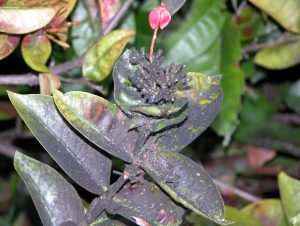
Sooty mold on Ixora Photo Credits: UF/IFAS Kim Gabel
The First Three
The first strategy is cultural control wherein you optimize the environment in which your plant grows. Improved drainage and removal of plants susceptible to insect attack are excellent examples. You should also look into the lifecycle of insect pests to remove anything that will provide habitat. The next control is mechanical. This methodology is the most work intensive but comes with the least environmental impact as insects will be removed by hand. Biological control is like mechanical control except that removal of the pest is left to natural predators. There are many, but birds and lady beetles are best known. Creating habitat for these will help keep insect populations to an acceptable level with the bonus of falling into Florida friendly landscaping philosophies.
Chemicals are Not the Bad Guy
Chemical control is the final approach. Some may be surprised to find this here, but it is effective. With the above in place, you may find there are still insect issues. Chemicals will be your next step but do not feel put off by this approach. Research the best products for your situation and follow the instructions on the label to the letter. The label is designed to reduce risk to you and the environment while providing effective pest control.
Insect pests have plagued gardeners since the first person intentionally planted anything. Controlling these pests using a multipronged approach is the optimal way to reduce damage to your plants while minimizing environmental impact. Following the methodology in this post will bring a pest free landscape that you and your family will enjoy. For more information on integrated pest management, see these Ask IFAS documents, or contact your local extension agent for additional information on this and any topic regarding your gardens and more.
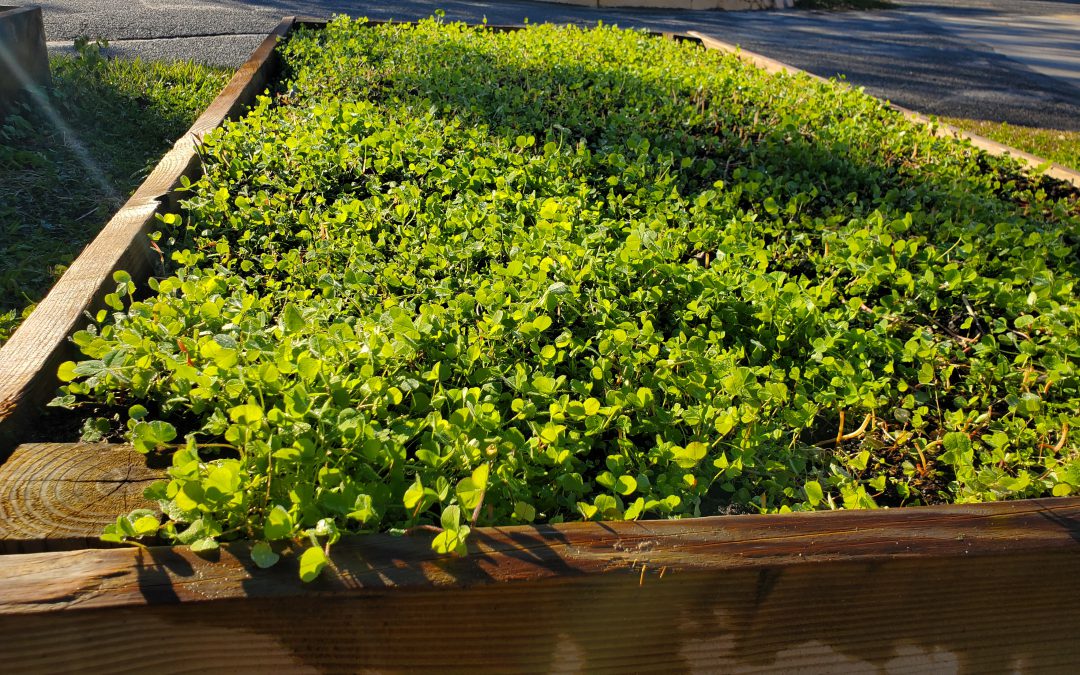
by Daniel J. Leonard | Jan 20, 2022
One of the major recent movements in production agriculture has been the widespread adoption of cover crops. This practice gives farmers a host of benefits, from erosion prevention to nutrient retention and recycling. However, using cover crops isn’t just for large scale farming operations. Hobby vegetable gardeners can absolutely employ similar systems on a smaller scale to reap the same benefits. For the past two years, I’ve used Buckwheat to provide a soil building cover during the heat of summer between spring and fall gardens. This winter, after my fall greens garden succumbed to frost, I decided to employ the same tactic with a mix of Red Clover (Trifolium pratense), White Clover (Trifolium Repens), and Crimson Clover (Trifolium incarnatum) to enhance my soil during the coldest months until spring tomato planting arrives!
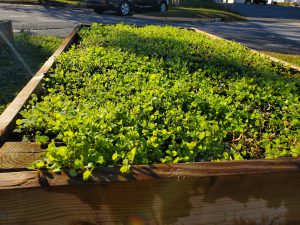
Clover mix used as a cool season cover crop in raised beds. Photo courtesy Daniel Leonard.
While there are many different species of plants (rye, oats, wheat, various brassicas, etc.) that can be planted in November or December as cool season covers to deliver benefits like winter weed suppression, enhance soil organic matter, retain and harvest leftover nutrients, and provide habitat for beneficial insects, I chose Clover for an additional reason. In addition to the above benefits, Clover is a legume and also fixes atmospheric nitrogen, making it available for subsequent plantings! Not only is Clover an excellent soil cover, but it also provides some nitrogen fertilizer to the following vegetable garden!
Growing Clover, while not quite as simple as Buckwheat or small grain covers like oats and rye, is relatively easy for most gardeners. The first step is selecting which clover species and/or variety to grow. I chose a mix of Crimson, White, and Red Clover simply because I had several pounds of each left over from a previous field planting. However, any one of the three may be used by themselves or in various combinations. All are excellent choices for garden cover crops and have similar growing requirements. Crimson Clover is the most readily available, but all three species can be found at most farm and garden supply stores.
The next step is to prep your garden beds for clover seeding. I thoroughly remove weeds from my raised beds, lightly till the top couple of inches of soil, and rake to provide a level surface. Since clover seed is tiny, a smooth, clean seedbed is a must for excellent germination. Once this is done, your next should determine how much seed to plant. Recommended clover seeding rates are usually given on a per acre basis and range from 3-4 lbs/acre (White Clover) to 20-25 lbs/acre (Crimson Clover). Given these seeding rates, planting in a 4’x8’ (32 ft2) raised bed is only going to require a miniscule amount of seed.
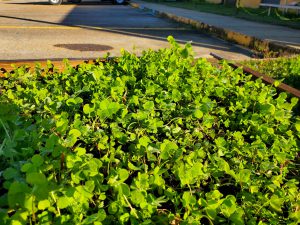
Clover mix used as a cool season cover crop in raised beds. Photo courtesy of Daniel Leonard.
To ensure a good stand while minimizing risk of overplanting, I mix equal parts clover seed and either sand, vermiculite, or other media similar in size to clover seed and hand scatter over the surface of my beds, making sure to uniformly cover the entire bed. If you think the stand is too thick, you can always hand-thin after emergence.
As a group, clovers prefer moist soil that is not allowed to dry out completely. This isn’t usually a problem given the Panhandle’s frequent rainy cold fronts in winter, but if rainfall is inconsistent, some irrigation will be required. Supplemental fertilizer isn’t normally necessary when planting a clover cover in vegetable gardens because nutrients remaining from the previous veggie crops are usually sufficient for growth and development (N especially is not needed as legumes produce their own through N fixation). 2-3 weeks before you’re ready to plant your spring veggies, chop the clover cover into the top few inches of your bed to terminate it and release its nutrients back into the garden. It’s that easy!
Planting a winter legume cover crop like clover is a great way to harness the benefits of cover crops for your spring veggies and enhance the aesthetics of your otherwise barren and drab garden beds! For more information about growing winter cover crops or any other horticultural topic, contact your local UF/IFAS County Extension office. Happy Gardening!
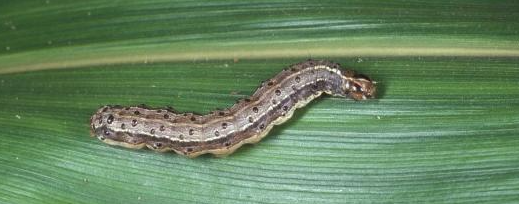
by Sheila Dunning | Nov 4, 2021
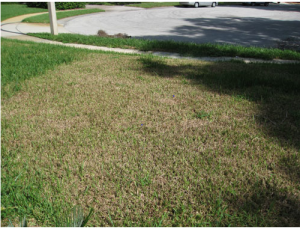
Chewing caterpillar damage on St. Augustinegrass Photo by: Steven Arthurs, UF
Tropical sod webworm larvae are destructive pests of warm season turfgrasses in the southeastern U.S. especially in the fall. Commonly referred to as a worm, they are truly caterpillars, the larvae of a moth. Larval feeding damage reduces turfgrass aesthetics, vigor, photosynthesis and density, which is very evident on finer-bladed grasses such as bermudagrass and zoysiagrass. Feeding damage is possible on all grass types however. Adults, a dull brown colored moth about ¾ inch long, rest in sheltered and shrubby areas during the day and are active at dusk. Females deposit clusters of 10-35 eggs on the upper surface of grass blades. The eggs hatch in 3-4 days and develop from a 1 mm long caterpillar to one over 11 mm long through six instars within 21 to 47 days, depending on temperature. Larval feeding occurs at night, leaving the grass looking ragged, shortened and missing.
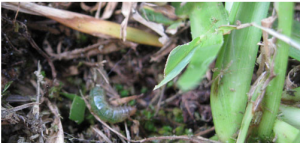
Sod webworm on soil surface
Photo by: Steven Arthurs, UF
Control should be against damaging larvae, not the flying moths. However, insecticidal soap applications to moth harboring areas can reduce re-population frequency. Soil-drenching soap flushes can be used to find the caterpillars, especially in dry and hot grass areas. Bacterial-based insecticides, such as Bt, Bacillus thuringiensis var. kurstaki or Spinosad, will control sod webworm caterpillars without impacting beneficial species as long as they are applied with each flush of grass growth.
Fall armyworms are also active when the weather turns cooler. They feed any time of the day or night, but are most active early in the morning or late in the evening. The 1 ½ inch long gray and white moth lays about 1,000 eggs in multiple masses on any vegetation. Two to 10 days later, the small caterpillar hatches and begins to grow to nearly 2 inches long over a two week period. The fall armyworm is easily recognized by its dark head marked with a distinct pale-colored inverted Y and the long black stripe running along each side of its body. These aggressive feeders “march” rapidly across grassed areas consuming every above-ground plant part. While bacterial-based insecticides will reduce the numbers, control of armyworms usually requires synthetic insecticides.
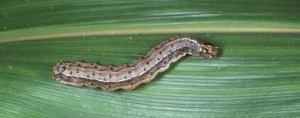
Armyworm
Photo by: Jim Castner, UF
The good news is that grass “worms” can be controlled and the blades will grow back. The damage may be devastating to see, but usually not a permanent problem.
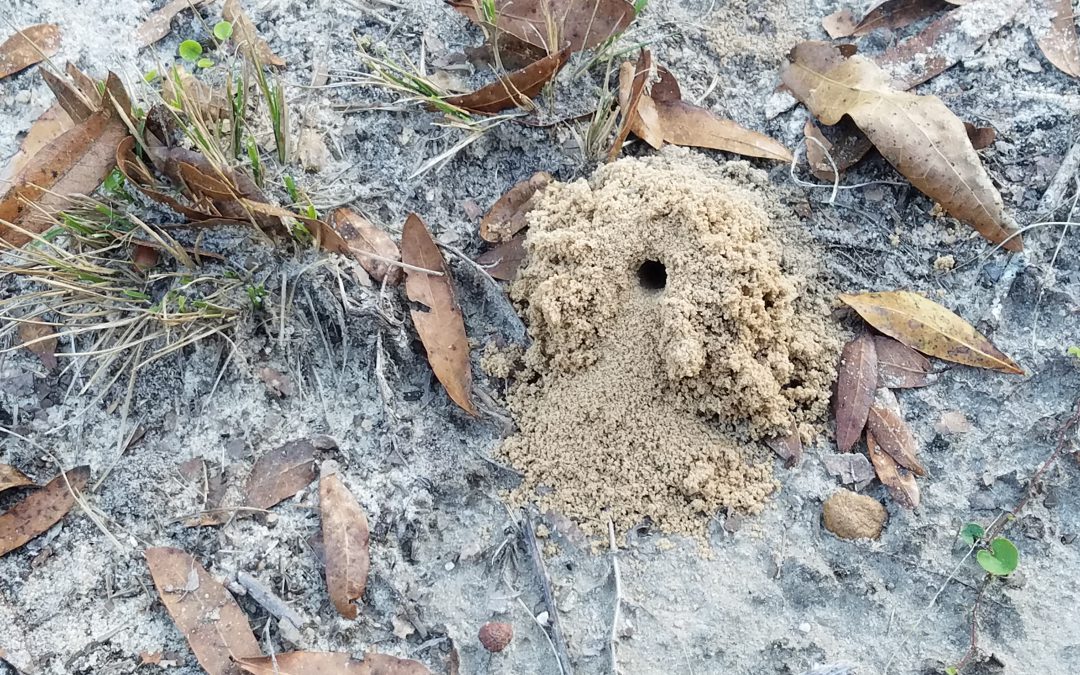
by Evan Anderson | Oct 21, 2021
While most people are familiar with the European honey bee, the domesticated insect that pollinates our crops and provides us with honey, there are plenty of other species of bees and their relatives out there. Most of them are harmless, spending their time quietly pollinating plants, including our crops. Their presence in the landscape, however, may cause some alarm, as it can be difficult for the untrained eye to distinguish between aggressive species and those that are innocuous.
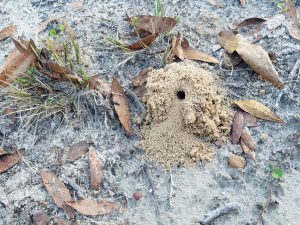
The entrance to a miner bee burrow.
Homeowners may occasionally note small mounds of soil in sandy areas of their lawns. Sometimes sporting a small hole in the center, these are the nesting sites of solitary, ground-nesting bees or hornets. Miner bees or digger bees build underground chambers, usually in well-drained, otherwise bare areas of sandy soil. Multiple bees may choose to dig their nests in the same location, though each bee makes its own tunnel and they do not live communally. Each bee lays her eggs in the nest she has excavated. She gathers pollen to feed the young when they hatch, stocks the larder, and leaves. When the young emerge from the nest, they fly away and do not remain; they will dig their own nests when they are ready to reproduce. While there is no need to control these insects (they serve as fantastic pollinators), the mounds of soil they make may be aesthetically displeasing to some people. Keeping a healthy lawn with no bare patches can deter miner bees from nesting in an area. Irrigation sprinklers can also help to keep the ground moist; these bees prefer dry soil, so it may keep them away. Care must be taken not to over-water a lawn, however!
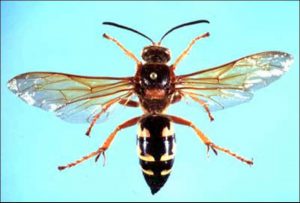
A cicada killer wasp. Photo credit: Division of Plant Industry
Another species of note is the cicada killer hornet. Also known as the giant ground hornet, these insects grow to a size of about an inch and a half in length. Instead of pollen, they capture cicadas to feed their young. Like the miner bee, though, they are not harmful. Females do possess a stinger which they use to hunt their prey. Males may try to warn people or animals away from their burrows by acting aggressive, but they have no stingers. Some may see the large size of the cicada killer and wonder if the so-called “murder hornet” has made its way from Washington state to Florida, but as of this writing it has not. Unless you are a cicada, you have nothing to fear.
One ground-dwelling hornet that does warrant some concern is the yellowjacket. These are communal hornets, living in hives that are often build underground. Yellowjackets are known for their bad attitudes, attacking anyone who disturbs the entrance to their nest. They can be beneficial, being predators of many other insects including plant pests. A colony located too close to human dwellings or areas of activity is most often a nuisance, however. Any attempts to control yellowjacket nests should be done at night when they are less active. Protective clothing is recommended even then. Large or difficult to reach nests may require the attention of a certified pest control company.
For more information on these topics, see our EDIS publications:
Miner Bees: https://edis.ifas.ufl.edu/publication/in912
Cicada Killers: https://edis.ifas.ufl.edu/publication/in573
Yellowjackets: https://edis.ifas.ufl.edu/publication/IN238

















